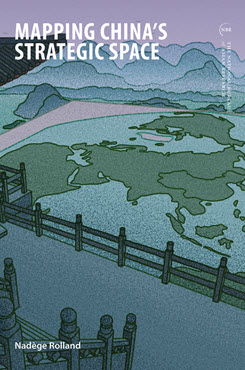NBR Special Report No. 111
Mapping China's Strategic Space
This report from NBR’s Mapping China’s Strategic Space project examines what constitutes the imagined space beyond China’s national borders that its leaders consider vital to the pursuit of national political, economic, and security objectives.
Visit the Mapping China’s Strategic Space website to read the report’s introduction online:
INTRODUCTION: MAPPING CHINA’S STRATEGIC SPACE
Download the full report PDF below.
EXECUTIVE SUMMARY
MAIN ARGUMENT
Domestic discussions about expansion, initiated before the collapse of the Soviet Union, are still ongoing in the People’s Republic of China (PRC). Heavily influenced by classical geopolitics, these discussions are intimately linked with the country’s self-perception of power and hegemonic aspirations. The need to strive for space is accompanied by a persistent fear of foreign containment. The definition of an expanded geographic sphere of interest and influence first emerged in the form of a quasi-global mental map around 2013, and this conception continues to endure despite China’s current economic slowdown. More recently, this mental map extended to include economic and ideological “space” as well as physical geographies.
POLICY IMPLICATIONS
- Although fiercely denied by government and academic elites, the PRC’s hegemonic aspirations are palpable, even if they might not materialize in the same way as in previous historical periods. Understanding how its strategic space is defined serves as an early warning of the future direction in which China’s foreign policy and grand strategy could be headed, provided its elites continue to believe that their country’s power is growing relative to that of the U.S.
- PRC elites consider China’s expansion to be the inevitable result of its growing power and interests, and they regard external pushback and efforts to contain this expansion as unavoidable. There is little that external powers can do to assuage Beijing’s fears of hostile foreign containment and encirclement.
- The geostrategic importance of the Eurasian continent and its surrounding oceans for the PRC is unmistakable, as is the linkage between China’s and Russia’s strategic spaces. China’s maritime and global expansion would not have been possible and could not be sustainable without a secure rear area. Russia will continue to be key in Beijing’s geostrategic calculations for the foreseeable future.
- Having expanded to a quasi-global level, China’s definition of its strategic space could increase the risk of contention or even conflict, especially in what it defines as its “strategic new frontiers.” Beijing might also already be facing the prospect of overextension, with the possible need to revise its conception of strategic space. This is an emerging concern for Chinese strategic thinkers that should be considered by their U.S. counterparts.
TABLE OF CONTENTS
Foreword
Executive Summary
Introduction: Mapping China’s Strategic Space
Chapter 1
Strategic Space
Chapter 2
The Return of Geopolitics
Chapter 3
“Positioning” China: Power and Identity
Chapter 4
The Logic and Grammar of Expansion
Chapter 5
Conclusion: A New Map?
Nadège Rolland is Distinguished Fellow for China Studies at the National Bureau of Asian Research. Her NBR publications include China’s Eurasian Century? Political and Strategic Implications of the Belt and Road Initiative (2017), “China’s Vision for a New World Order” (2020), and “A New Great Game? Situating Africa in China’s Strategic Thinking” (2021).



 Mapping China’s Strategic Space
Mapping China’s Strategic Space
